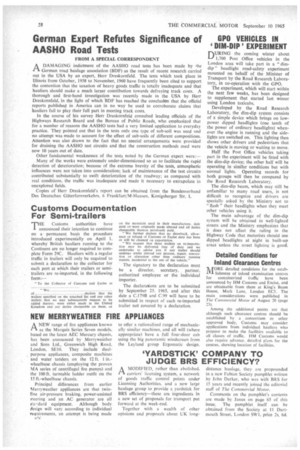GPO VEHICLES IN ' DIM-DIP ' EXPERIMENT
Page 30

If you've noticed an error in this article please click here to report it so we can fix it.
DURING the coming winter about 1,700 Post Office vehicles in the London area will take part in a " dimdip" headlight road-safety experiment mounted on behalf of the Minister of Transport by the Road Research Laboratory, in co-operation with the GPO.
The experiment, which will start within the next few weeks, has been designed to supplement that started last winter using London taxicabs.
Developed by the Road Research Laboratory, the dim-dip system consists of a simple device which brings on lowpower dipped headlights (one tenth of the power of ordinary headlights) whenever the engine is running and the sidelights are switched on. This lighting then shows other drivers and pedestrians that the vehicle is moving or waiting to move.
Half the Post Office vehicles taking part in the experiment will be fitted with the dim-dip device; the other half will be operating in similar conditions but with normal lights. Operating records for both groups will then be compared by the Road Research Laboratory.
The dim-dip beam, which may still be unfamiliar to many road users, is not difficult to recognize and drivers are specially asked by the Ministry not to " flash" their headlights when they meet other vehicles using it.
The main advantage of the dim-dip system will be obtained in well-lighted streets and the Ministry emphasizes that it does not affect the ruling in the Highway Code that motorists should use dipped headlights at night in built-up areas unless the street lighting is good.
























































































































